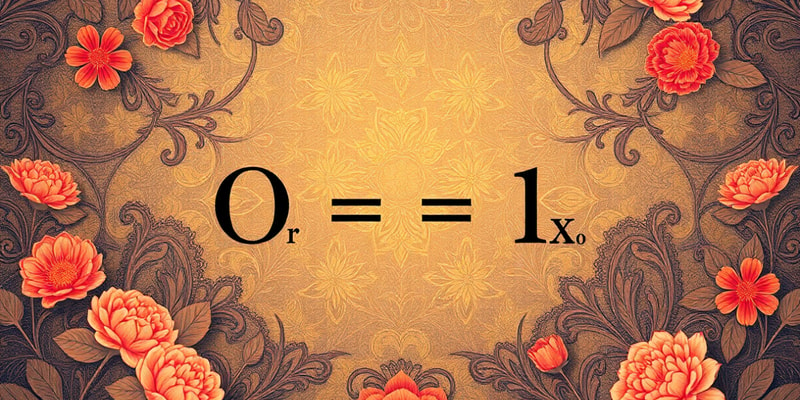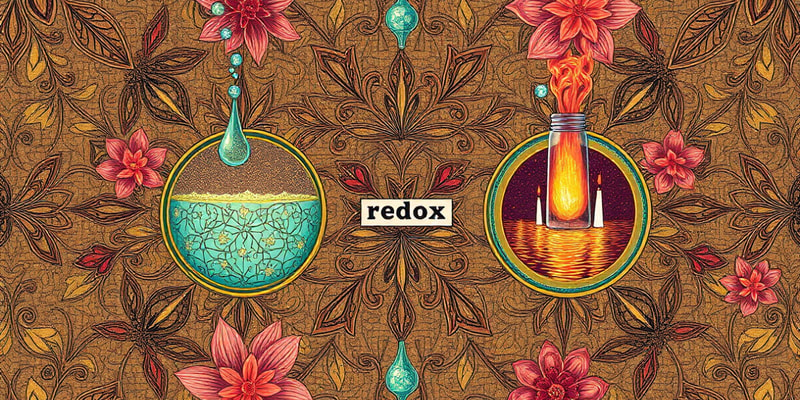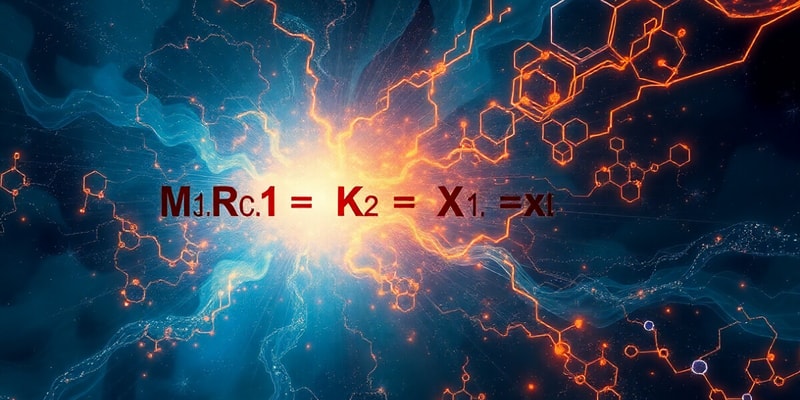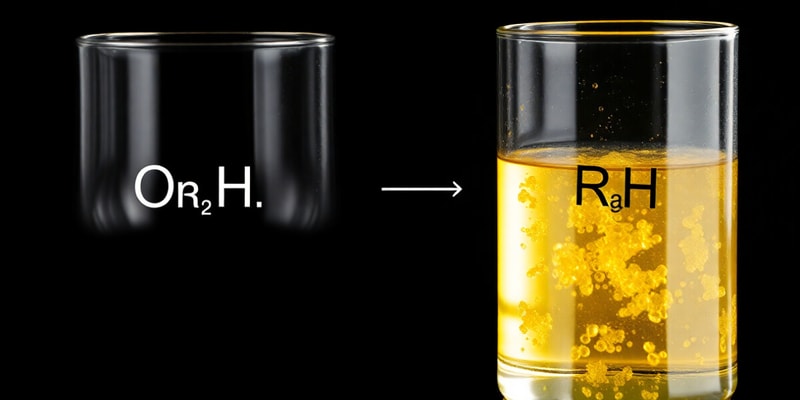Podcast
Questions and Answers
The reaction between Zn and NO3- produces Zn(OH)42- and ______.
The reaction between Zn and NO3- produces Zn(OH)42- and ______.
NH3
To balance the charge in the reaction, electrons ______ are added.
To balance the charge in the reaction, electrons ______ are added.
e-
The first half-reaction involves Zn and ______.
The first half-reaction involves Zn and ______.
OH-
In the second half-reaction, NO3- reacts with water and ______.
In the second half-reaction, NO3- reacts with water and ______.
Signup and view all the answers
To convert the reaction from acidic to basic, sufficient ______ is added.
To convert the reaction from acidic to basic, sufficient ______ is added.
Signup and view all the answers
The balanced equation shows that ______ moles of zinc are needed.
The balanced equation shows that ______ moles of zinc are needed.
Signup and view all the answers
The final balanced equation includes 6 moles of ______ to balance the reaction.
The final balanced equation includes 6 moles of ______ to balance the reaction.
Signup and view all the answers
The combined reaction indicates the formation of ______ in the product side.
The combined reaction indicates the formation of ______ in the product side.
Signup and view all the answers
The number of negative charges on the left side of the equation is represented as ______.
The number of negative charges on the left side of the equation is represented as ______.
Signup and view all the answers
The first step in balancing is writing 2 ______ equations for half reactions.
The first step in balancing is writing 2 ______ equations for half reactions.
Signup and view all the answers
Study Notes
Identifying Oxidation and Reduction Species
- The given reaction: Zn + NO3- → Zn(OH)42- + NH3 is a redox reaction occurring in basic aqueous conditions
Balancing Redox Reactions in Basic Solutions
- The process involves breaking the overall reaction into two half-reactions, one for oxidation and one for reduction.
- Balance all elements except hydrogen and oxygen by inspection in each half-reaction.
- Balance oxygen atoms by adding water molecules (H2O).
- Balance hydrogen atoms by adding protons (H+).
- Convert the reactions to basic conditions by adding hydroxide ions (OH-) to both sides to neutralize all H+ ions.
- Combine the H+ and OH- ions to form water molecules (H2O) and place the water on one side of the equation.
- Balance the charge in each half-reaction by adding electrons (e-).
- Multiply each half-reaction to equalize the number of electrons in both reactions.
- Combine the half-reactions, canceling out common species on both sides of the equation to obtain the balanced overall redox reaction.
Balancing the Redox Reaction
- The oxidation half-reaction: Zn + 4OH- → Zn(OH)42- + 2e-
- The reduction half-reaction: NO3- + 6H2O + 8e- → NH3 + 9OH-
- The balanced redox reaction: 4Zn + 7OH- + NO3- + 6H2O → 4Zn(OH)42- + NH3
Checking the Balanced Reaction
- Ensure all elements and charges are balanced.
Studying That Suits You
Use AI to generate personalized quizzes and flashcards to suit your learning preferences.
Related Documents
Description
Explore the processes of identifying oxidation and reduction species in redox reactions, particularly in basic aqueous solutions. This quiz will guide you through balancing these reactions step-by-step, ensuring a clear understanding of the conversion of half-reactions into balanced equations.




